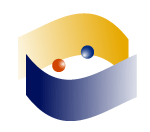When I survey the landscape of educational tools, I come to the following conclusion: Elgg is the most important tool, currently available, in shaping the future of learning. (Disclaimer: I was on an advisory board for Elgg when it first started, though the board never really did much, but I mention it now so it looks like I might be cool).
Why Elgg? I’ve used Elgg for various projects – for teaching at Red River College, for running a social network at Duke CE (both in 2005), and now with The Landing – an enterprise-level install at Athabascau University (initiated by Terry Anderson and Jon Dron). The tool has its bugs, but has developed substantially in the last few years. It is a central blog/wiki/twitter/flickr/craigslist/you-name-it do-it-all social network that is a) open source and b) not facebook. It is essentially a PLE – though diehards will disagree with me on this. It simplifies a PLE and makes it accessible to a broad audience.



